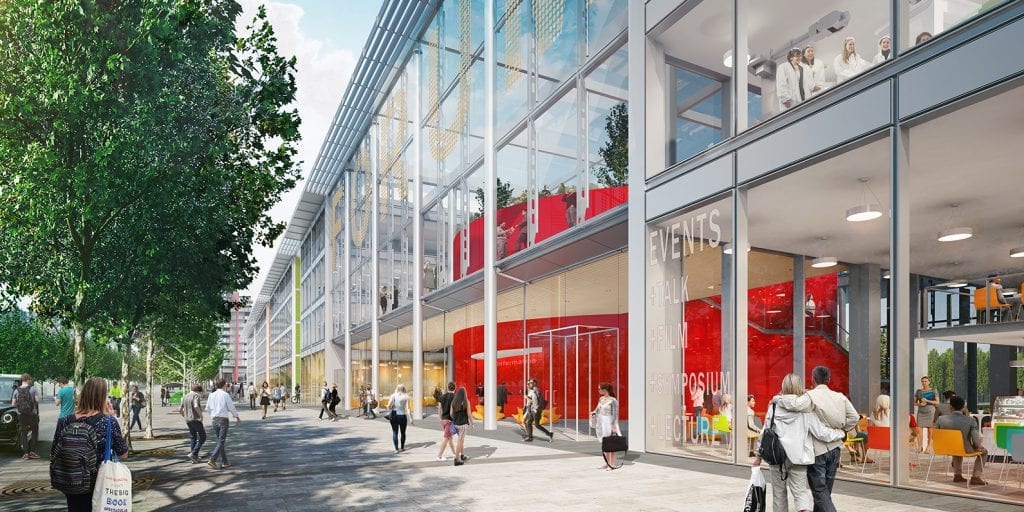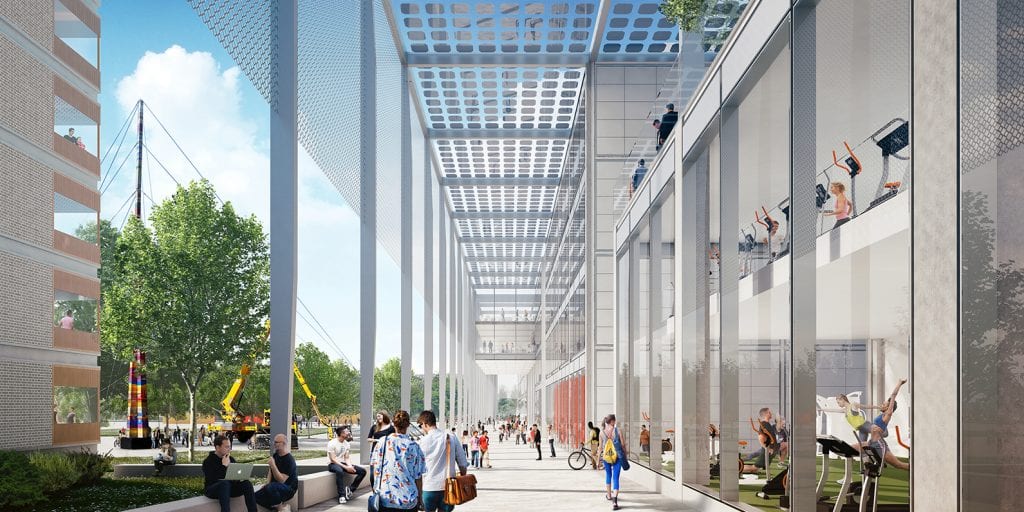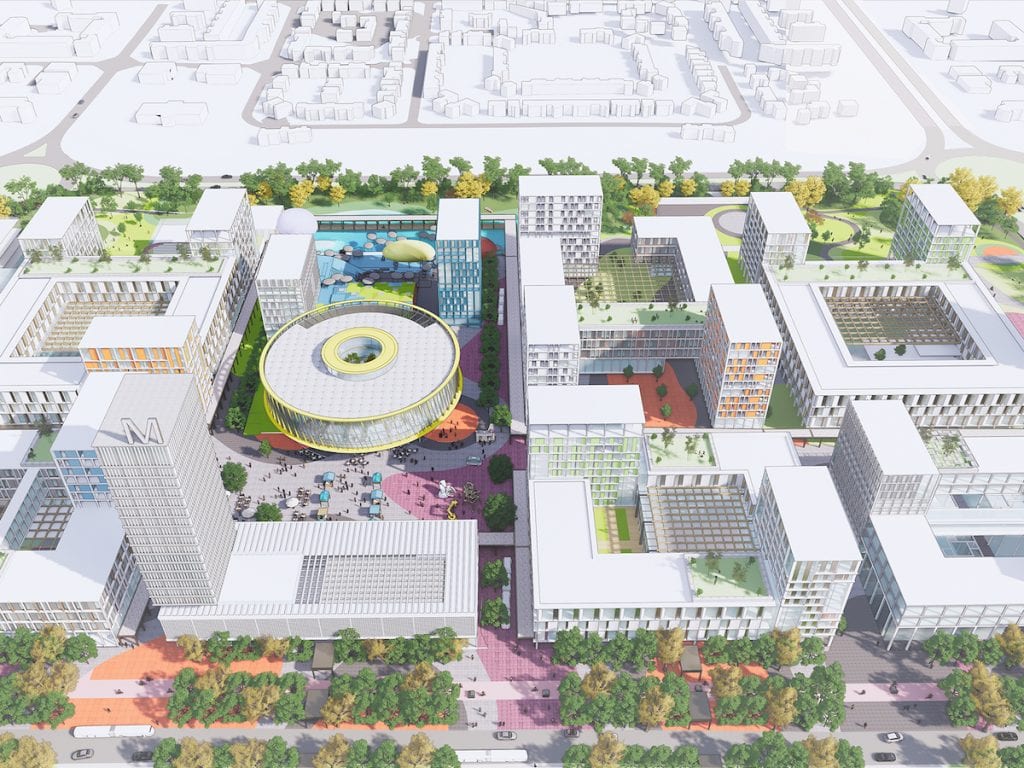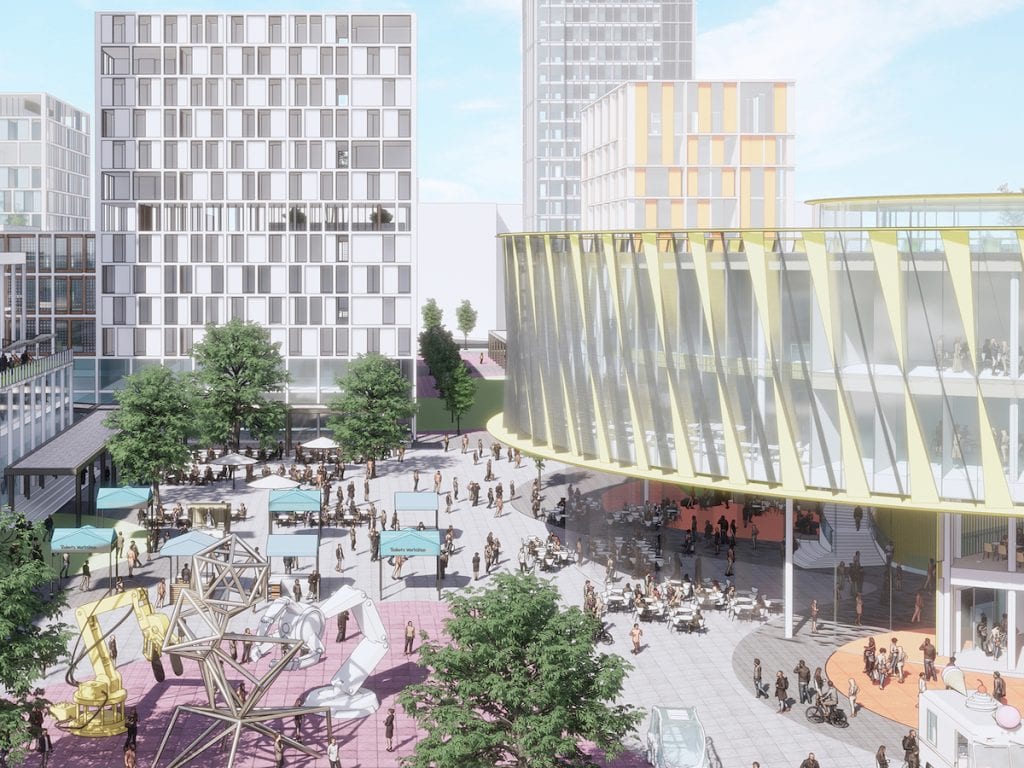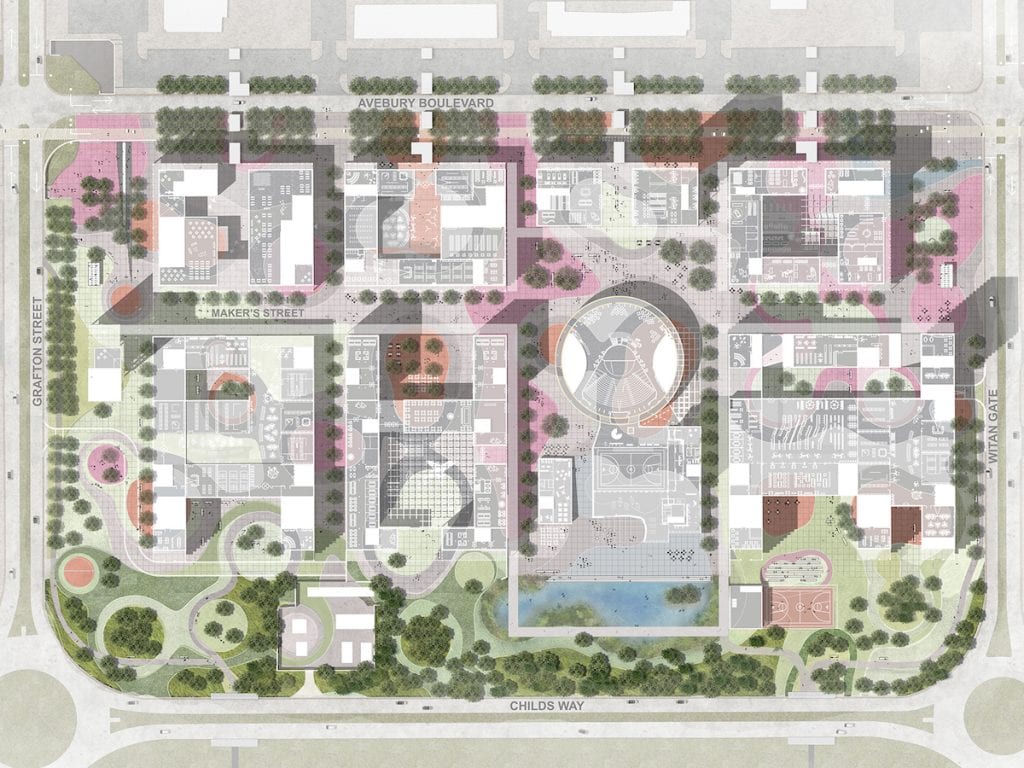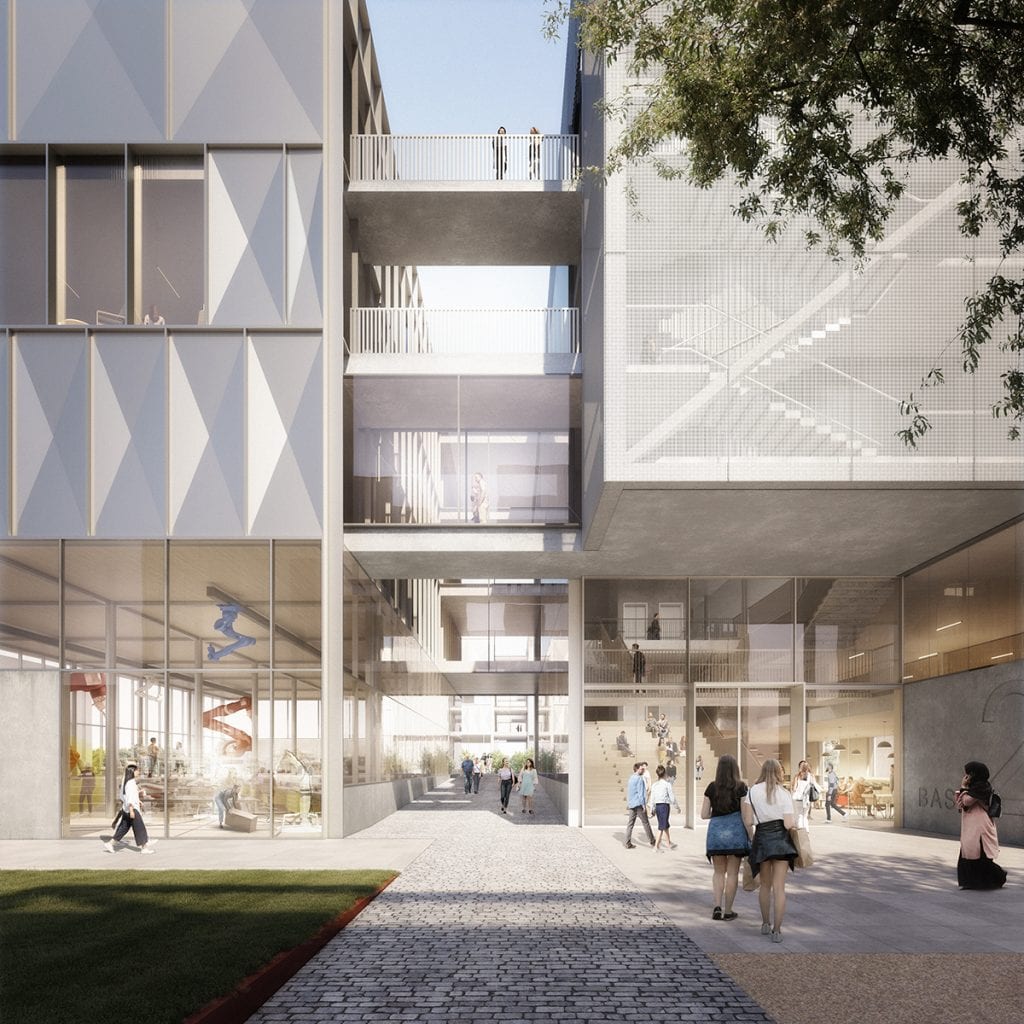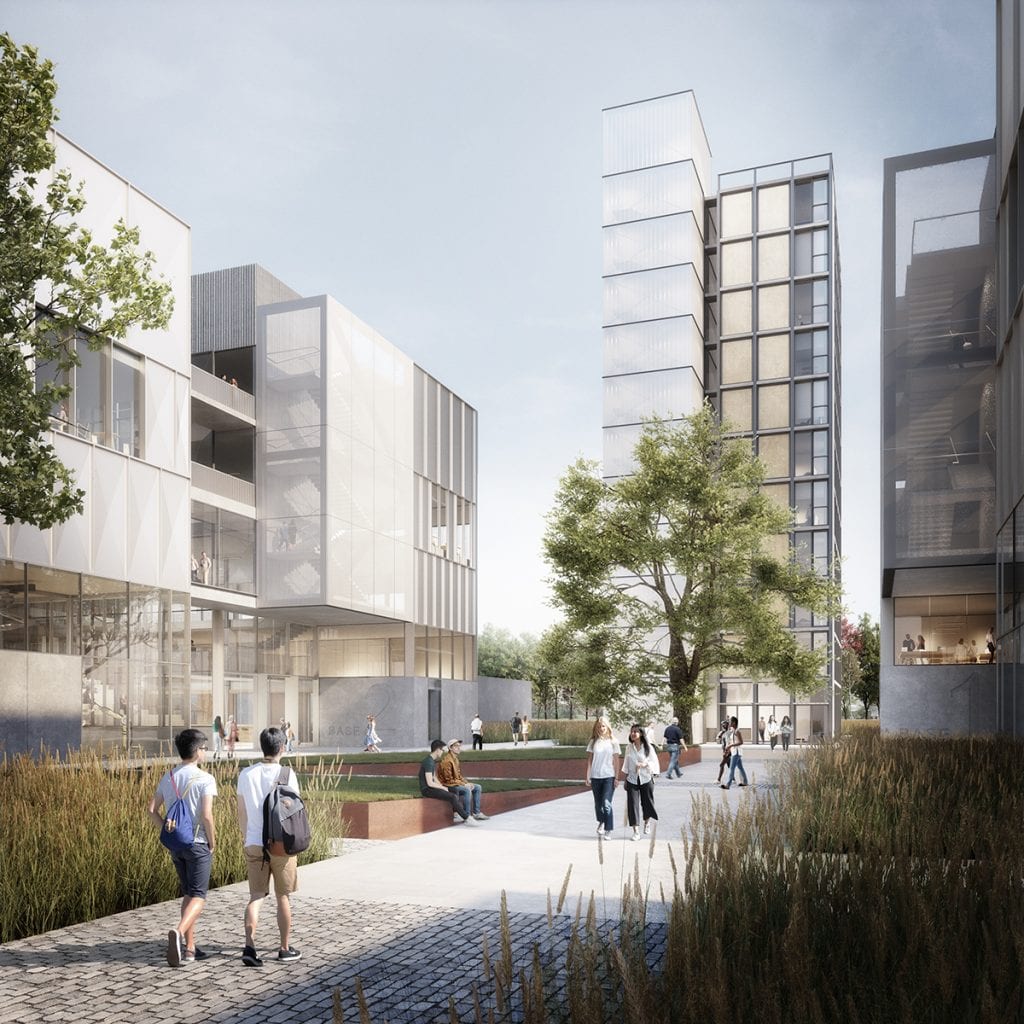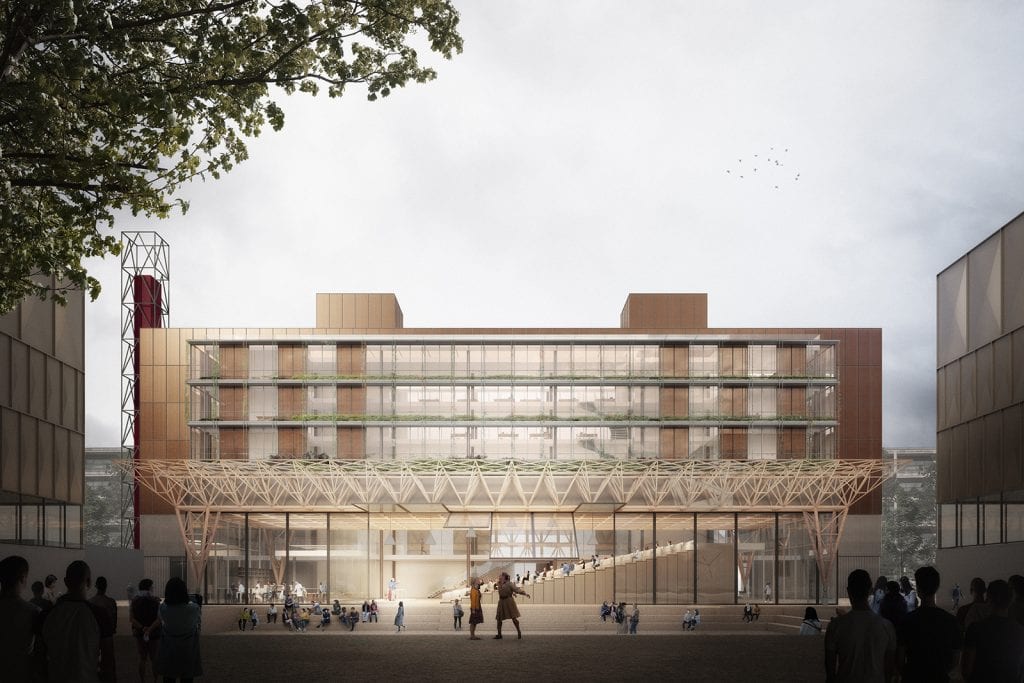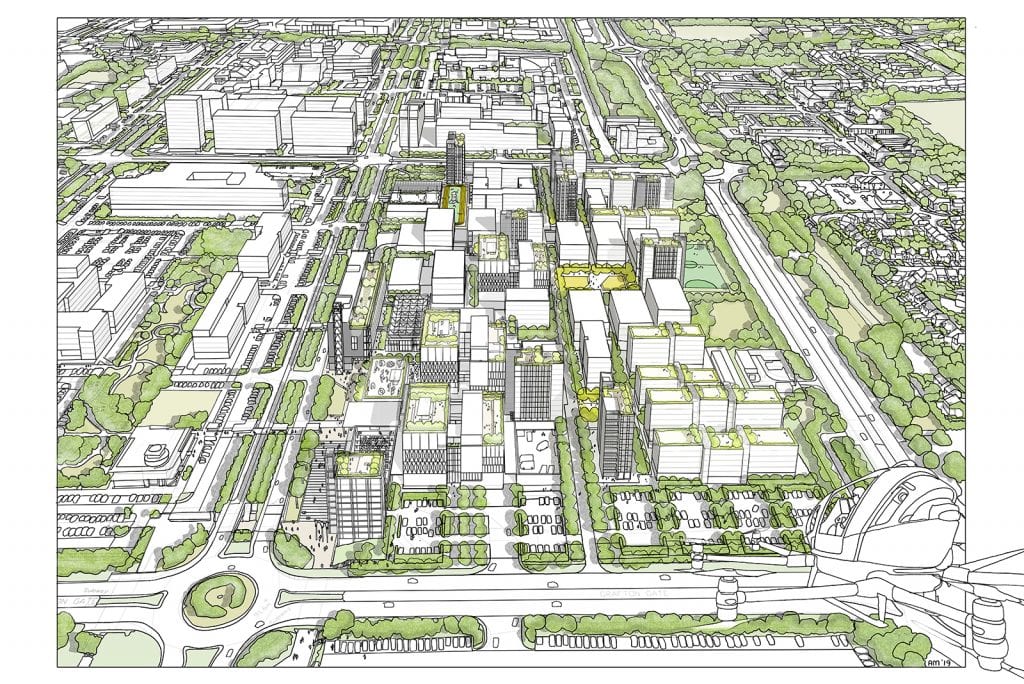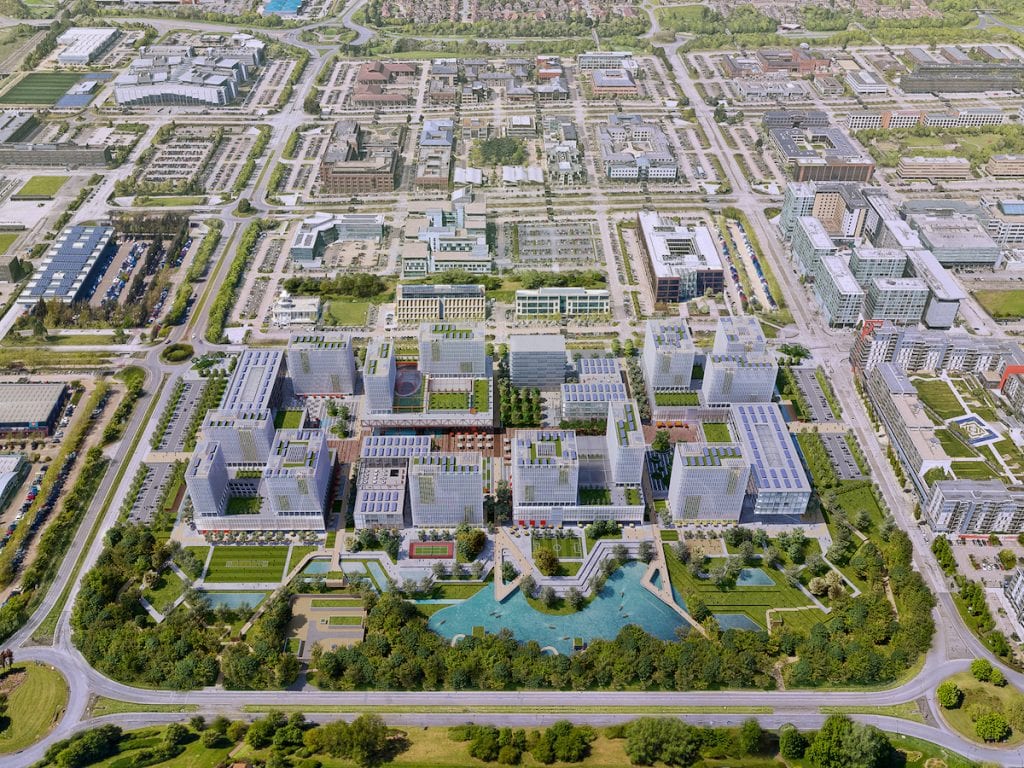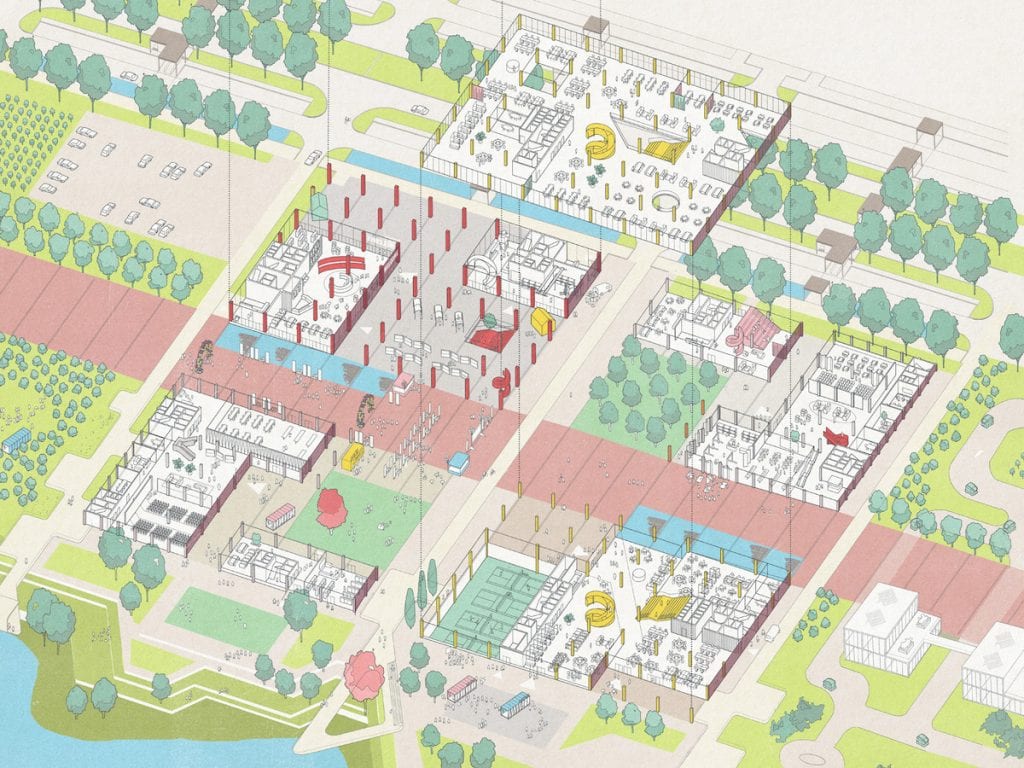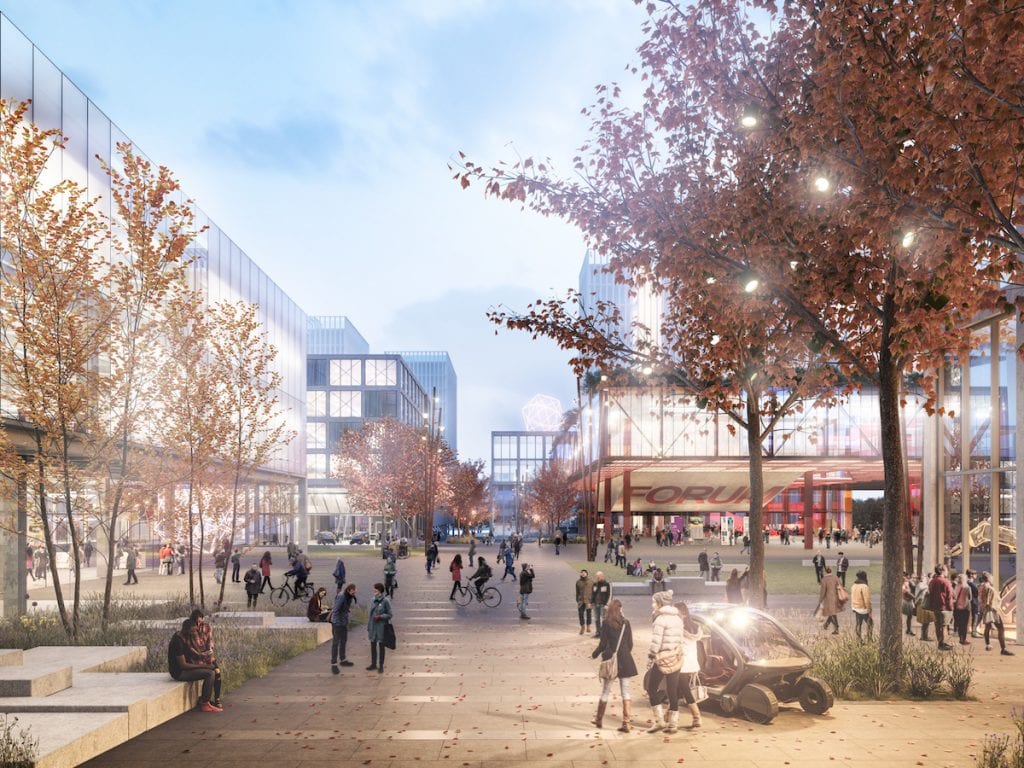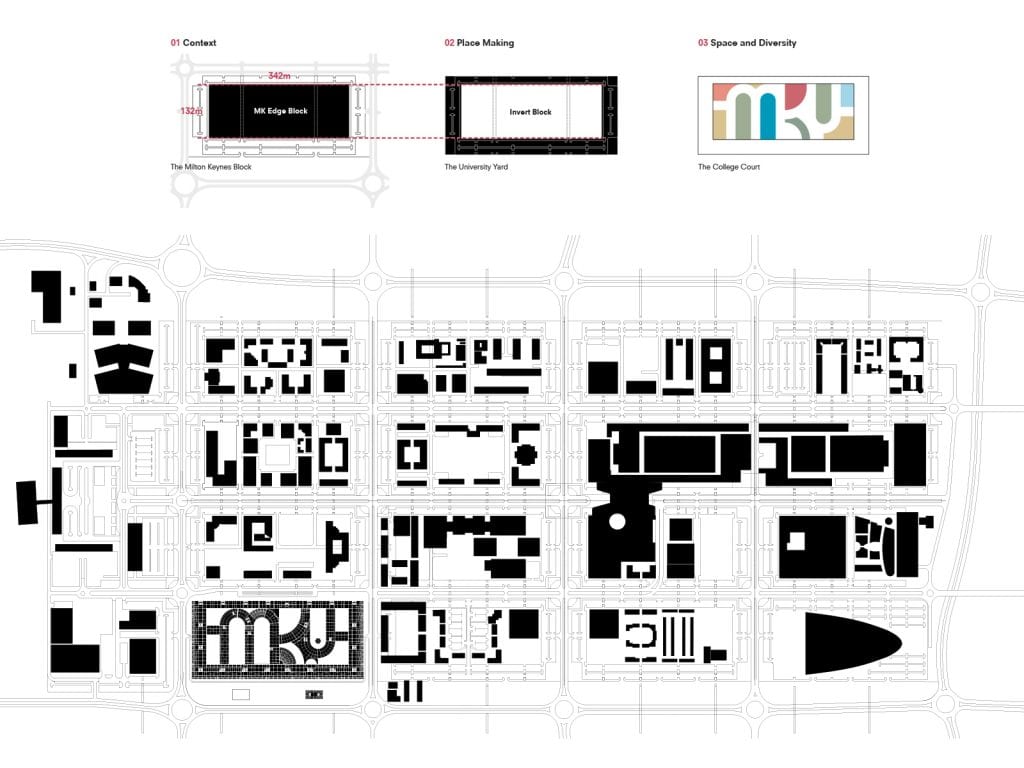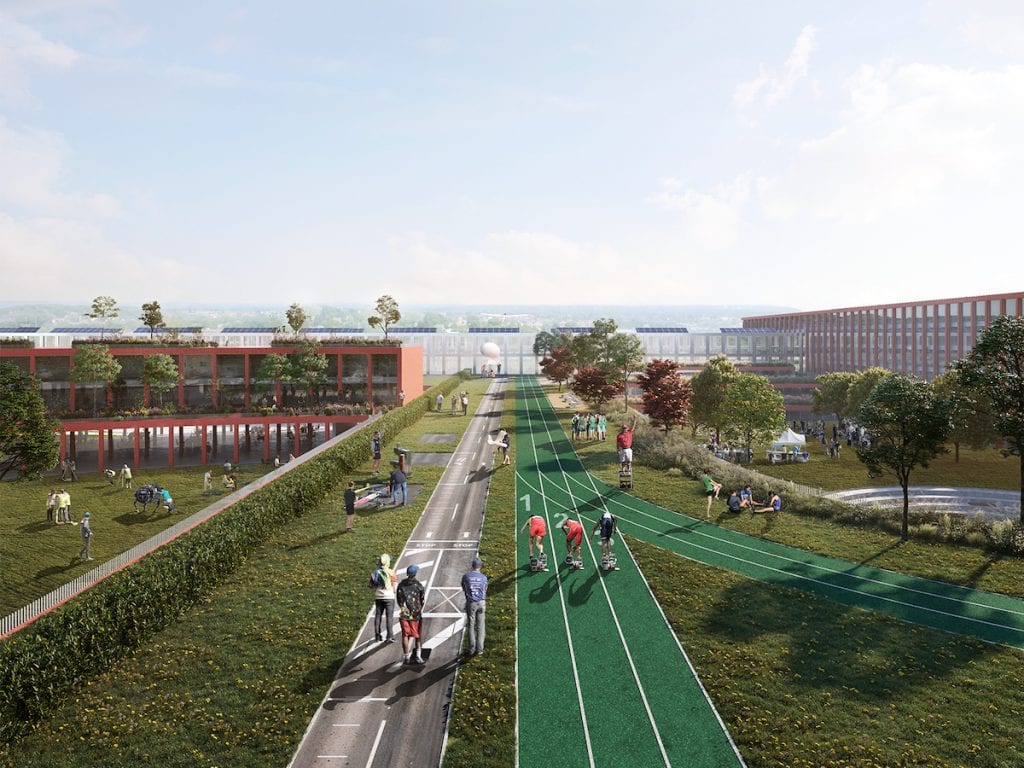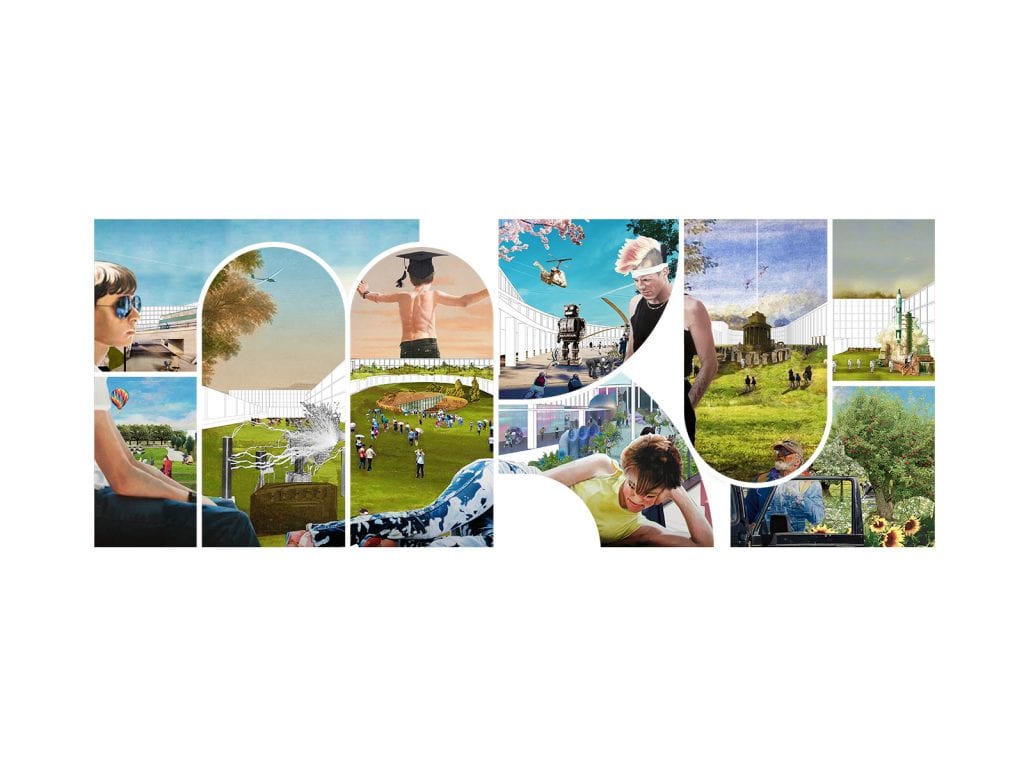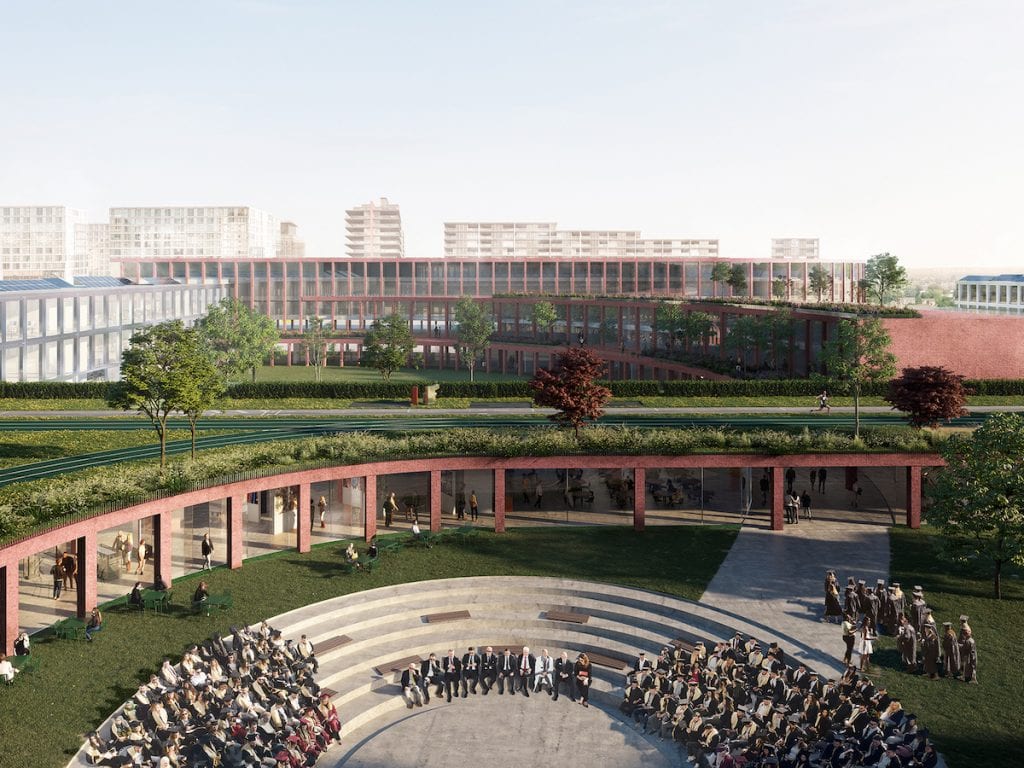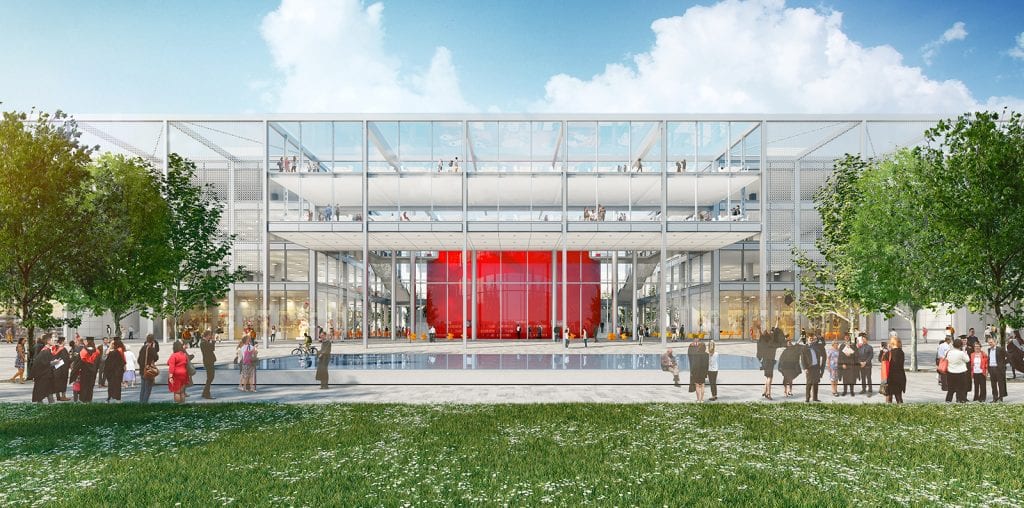
Winning entry by Hopkins Architects with Prior + Partners (© Malcolm Reading Consultants / Hopkins Architects)
In an ambitious plan to facilitate hi-tech research and development, the MK:U competition was launched in January 2019 to seek a masterplan for a new university. The site of the new university at MK is located at the heart of the Oxford to Cambridge innovation arc and just 30 minutes from London by train. MK, now known as a Smart City, has excellent connectivity; its proximity to the M1 motorway and rail network means twenty million people can reach it within 60 minutes.
The process to identify a team to act a lead designer for the project commenced with a shortlising process, whereby the five eventual teams—picked from 57 entries—were provided with a stipend of £30,000 to complete documents for a competition stage. Won by Hopkins Architects with Prior + Partners, the five teams were:
• Co:MK:U — WilkinsonEyre and AECOM with Spaces that Work, Mecanoo, dRMM, Publica, Contemporary Art Society and Tricon
• Hawkins\Brown with KCAP, Grant Associates, BuroHappold Engineering and Sam Jacob Studio
• Hawkins\Brown with KCAP, Grant Associates, BuroHappold Engineering and Sam Jacob Studio
• Hopkins Architects with Prior + Partners, Expedition Engineering, Atelier Ten, GROSS. MAX., Buro 4, RLB Schumann, GRFN, Caneparo Associates, QCIC, Nick Perry Associates, Access=Design, Cordless Consultants, Sandy Brown Associates, FMDC and Tricon
• Lifschutz Davidson Sandilands with Architecture 00, Heyne Tillett Steel, Hoare Lea, Bradley-Hole Schoenaich Landscape Architects, Ken Baker, Steer, Iceni, Abell Nepp, Mark London, FMDC, People Friendly Design, PFB Construction Management and FiD
• OMA with BuroHappold Engineering, Planit-IE, Nicholas Hare Architects, Carmody Groarke, Galmstrup, Approved Consultant Services and Russell Partnership
Images from the winning design and finalists follow. Stay tuned for a more extensive investigation of the entries at a later date.
Hopkins Architects
London, UK
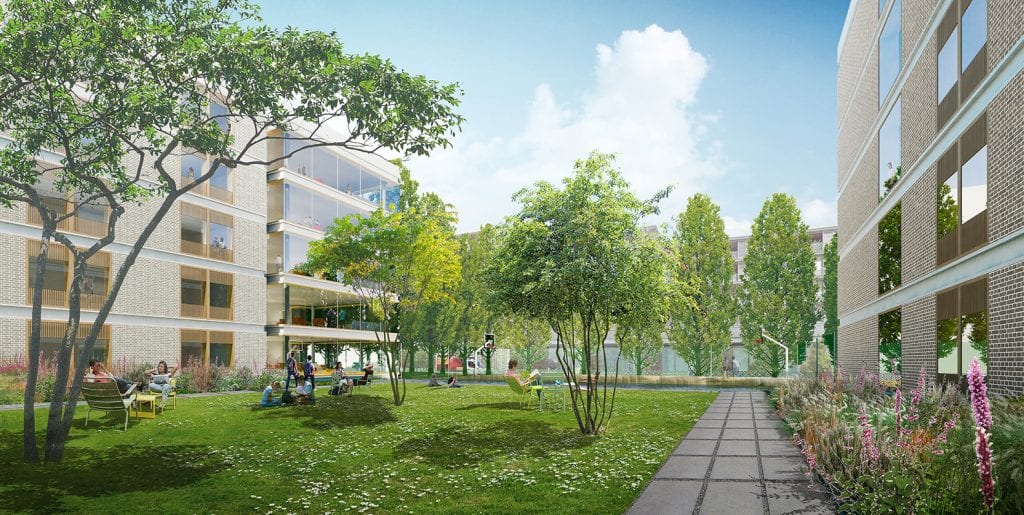
Images © Malcolm Reading Consultants / Hopkins Architects
Co:MK:U — WilkinsonEyre and AECOM
London, UK
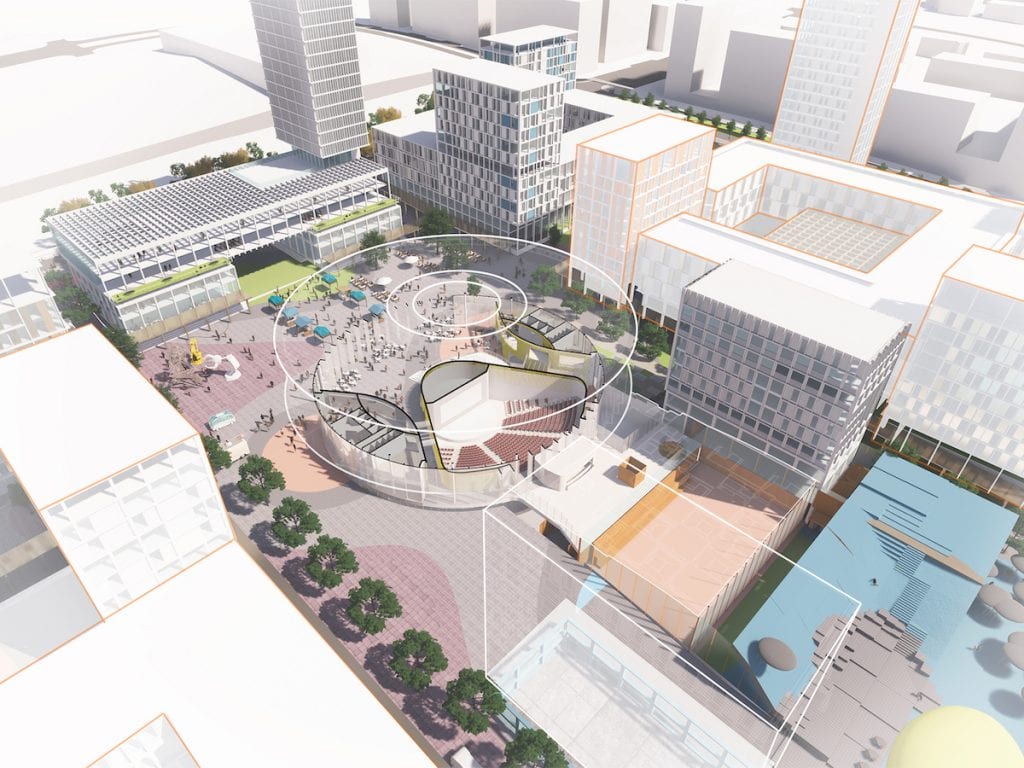
Images © Malcolm Reading Consultants / CO:MK:U
Lifschutz Davidson Sandilands
London, UK
Images © Malcolm Reading Consultants / Lifschutz Davidson Sandilands
Hawkins\Brown Architects
Manchester, UK
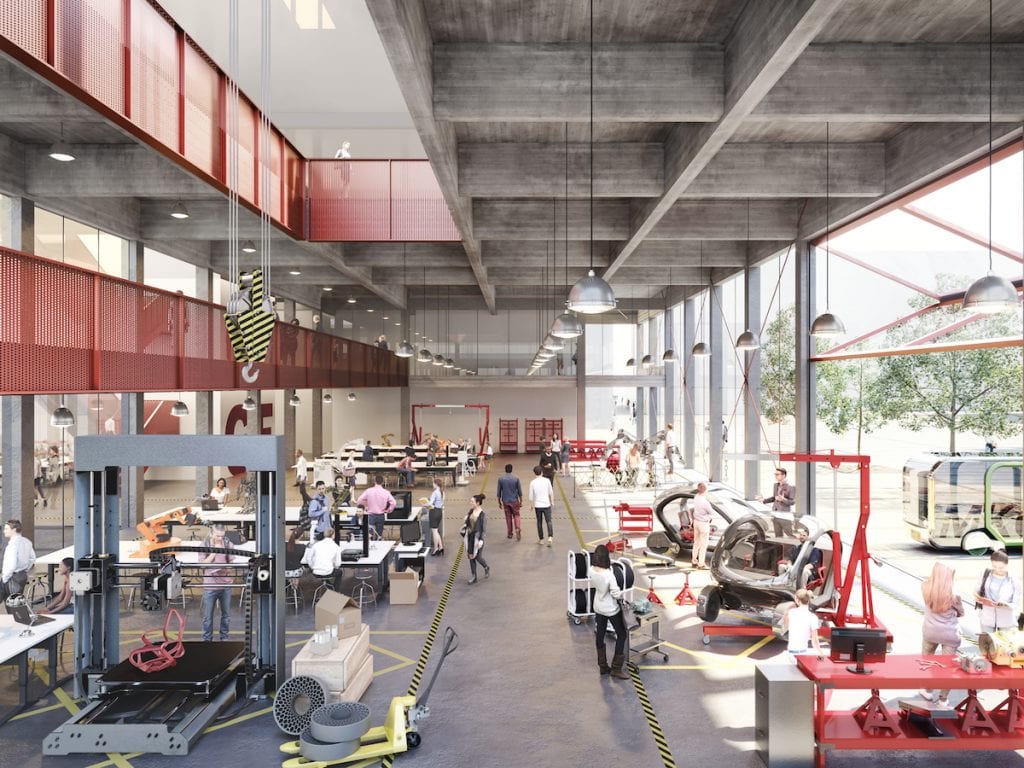
Images © Malcolm Reading Consultants / Hawkins\Brown
OMA
Rotterdam, The Netherlands



























